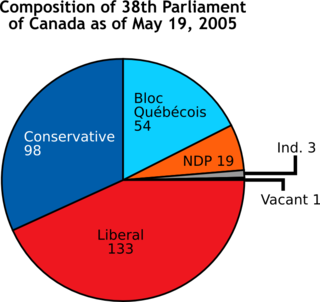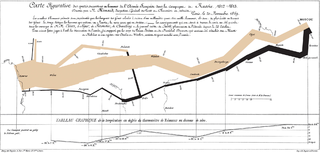
Classification chart or classification tree is a synopsis of the classification scheme, [1] designed to illustrate the structure of any particular field.

Classification chart or classification tree is a synopsis of the classification scheme, [1] designed to illustrate the structure of any particular field.
Classification is the process in which ideas and objects are recognized, differentiated, and understood, and classification charts are intended to help create and eventually visualize the outcome.
According to Brinton "in a classification chart the facts, data etc. are arranged so that the place of each in relation to all others is readily seen. Quantities need not be given, although a quantitative analysis adds to the value of a classification chart." [2]
Karsten (1923) explained, that "in all chart-making, the material to be shown must be accurately compiled before it can be charted. For an understanding of the classification chart, we must delve somewhat into the mysteries of the classification and indexing. The art of classification calls into play the power of visualizing a 'whole' together with its 'parts'." [3]
Early examples of classification chart are:
Early classification chart are often visualized in a tree structure. Modern charts can also be presented in table or as an infographic.
The term "classification chart" came into use in the 20th century. In his 1939 Graphic presentation. (first edition 1919) Willard Cope Brinton was one of the first to devoted a whole chapter on classification charts. [2]
In biology, phylogenetics is the study of the evolutionary history and relationships among or within groups of organisms. These relationships are determined by phylogenetic inference, methods that focus on observed heritable traits, such as DNA sequences, protein amino acid sequences, or morphology. The result of such an analysis is a phylogenetic tree—a diagram containing a hypothesis of relationships that reflects the evolutionary history of a group of organisms.

Systematics is the study of the diversification of living forms, both past and present, and the relationships among living things through time. Relationships are visualized as evolutionary trees. Phylogenies have two components: branching order and branch length. Phylogenetic trees of species and higher taxa are used to study the evolution of traits and the distribution of organisms (biogeography). Systematics, in other words, is used to understand the evolutionary history of life on Earth.
A phylogenetic tree, phylogeny or evolutionary tree is a graphical representation which shows the evolutionary history between a set of species or taxa during a specific time. In other words, it is a branching diagram or a tree showing the evolutionary relationships among various biological species or other entities based upon similarities and differences in their physical or genetic characteristics. In evolutionary biology, all life on Earth is theoretically part of a single phylogenetic tree, indicating common ancestry. Phylogenetics is the study of phylogenetic trees. The main challenge is to find a phylogenetic tree representing optimal evolutionary ancestry between a set of species or taxa. Computational phylogenetics focuses on the algorithms involved in finding optimal phylogenetic tree in the phylogenetic landscape.

A chart is a graphical representation for data visualization, in which "the data is represented by symbols, such as bars in a bar chart, lines in a line chart, or slices in a pie chart". A chart can represent tabular numeric data, functions or some kinds of quality structure and provides different info.

Information design is the practice of presenting information in a way that fosters an efficient and effective understanding of the information. The term has come to be used for a specific area of graphic design related to displaying information effectively, rather than just attractively or for artistic expression. Information design is closely related to the field of data visualization and is often taught as part of graphic design courses. The broad applications of information design along with its close connections to other fields of design and communication practices have created some overlap in the definitions of communication design, data visualization, and information architecture.
Evolutionary taxonomy, evolutionary systematics or Darwinian classification is a branch of biological classification that seeks to classify organisms using a combination of phylogenetic relationship, progenitor-descendant relationship, and degree of evolutionary change. This type of taxonomy may consider whole taxa rather than single species, so that groups of species can be inferred as giving rise to new groups. The concept found its most well-known form in the modern evolutionary synthesis of the early 1940s.

Edward Hitchcock was an American geologist and the third President of Amherst College (1845–1854).

Infographics are graphic visual representations of information, data, or knowledge intended to present information quickly and clearly. They can improve cognition by using graphics to enhance the human visual system's ability to see patterns and trends. Similar pursuits are information visualization, data visualization, statistical graphics, information design, or information architecture. Infographics have evolved in recent years to be for mass communication, and thus are designed with fewer assumptions about the readers' knowledge base than other types of visualizations. Isotypes are an early example of infographics conveying information quickly and easily to the masses.

An organizational chart, also called organigram,organogram, or organizational breakdown structure (OBS), is a diagram that shows the structure of an organization and the relationships and relative ranks of its parts and positions/jobs. The term is also used for similar diagrams, for example ones showing the different elements of a field of knowledge or a group of languages.

Data and information visualization is the practice of designing and creating easy-to-communicate and easy-to-understand graphic or visual representations of a large amount of complex quantitative and qualitative data and information with the help of static, dynamic or interactive visual items. Typically based on data and information collected from a certain domain of expertise, these visualizations are intended for a broader audience to help them visually explore and discover, quickly understand, interpret and gain important insights into otherwise difficult-to-identify structures, relationships, correlations, local and global patterns, trends, variations, constancy, clusters, outliers and unusual groupings within data. When intended for the general public to convey a concise version of known, specific information in a clear and engaging manner, it is typically called information graphics.
The tree of life or universal tree of life is a metaphor, conceptual model, and research tool used to explore the evolution of life and describe the relationships between organisms, both living and extinct, as described in a famous passage in Charles Darwin's On the Origin of Species (1859).
The affinities of all the beings of the same class have sometimes been represented by a great tree. I believe this simile largely speaks the truth.
The branches of science, also referred to as sciences, scientific fields or scientific disciplines, are commonly divided into three major groups:

Visual analytics is an outgrowth of the fields of information visualization and scientific visualization that focuses on analytical reasoning facilitated by interactive visual interfaces.

Willard Cope Brinton was an American consulting engineer, president of Brinton Associates, and information visualisation pioneer, particularly known for publication of the 1914 textbook on graphic methods, entitled Graphic methods for presenting facts.

Howard Gray Funkhouser was an American mathematician, historian and associate professor of mathematics at the Washington and Lee University, and later at the Phillips Exeter Academy, particularly known for his early work on the history of graphical methods.

Comparison diagram or comparative diagram is a general type of diagram, in which a comparison is made between two or more objects, phenomena or groups of data. A comparison diagram or can offer qualitative and/or quantitative information. This type of diagram can also be called comparison chart or comparison chart. The diagram itself is sometimes referred to as a cluster diagram.
The International Business Communication Standards (IBCS) are practical proposals for the design of business communication published for free use under a Creative Commons license. In most cases, applying IBCS means the proper conceptual, perceptual and semantic design of charts and tables.

Karl Gustaf Karsten was an American economist, statistician, businessman, inventor and author, known from his seminal work on graphical methods, and economic forecasting.

A routing diagram or route diagram in the field of management engineering is a type of diagram, that shows a route through an accessible physical space. Routing diagrams are used in plant layout study, and manufacturing plant design.

John Bailey Peddle was an American mechanical engineer, Professor of Machine Design at the Rose Polytechnic Institute and author, known for his seminal work Construction of Graphical Charts, 1910.